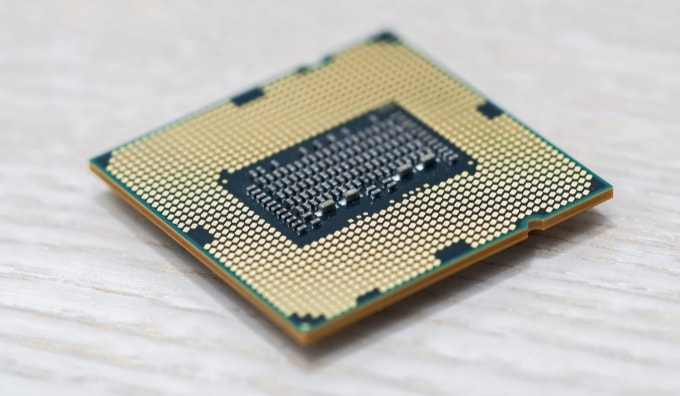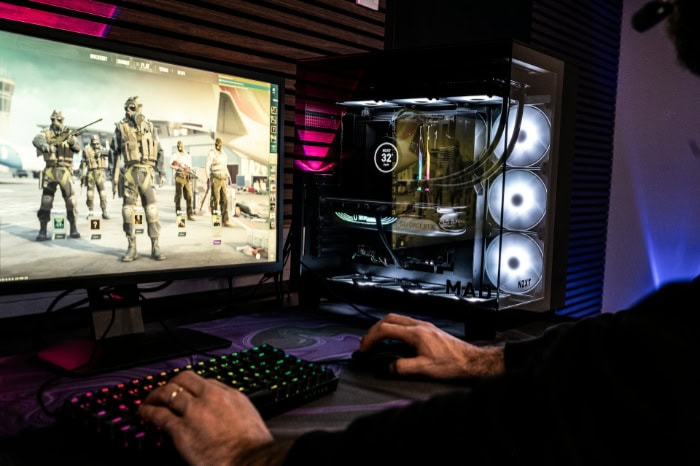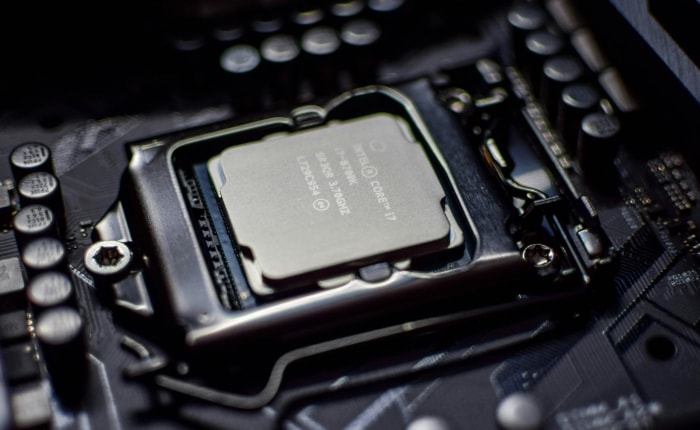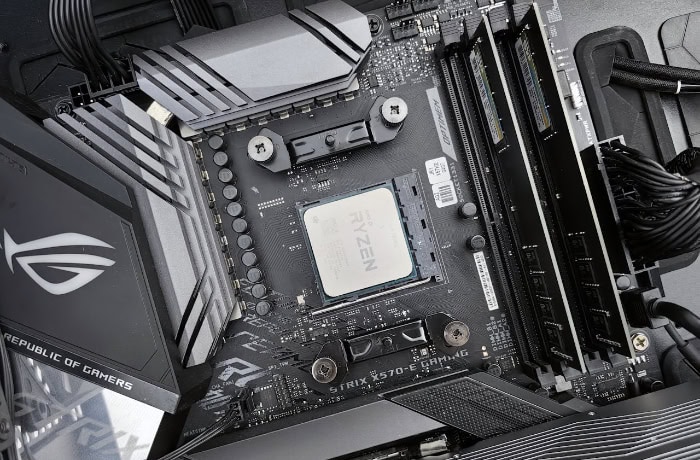AMD Ryzen 7 vs. Intel Core i7: Which Is Better?

Picking a processor is the most critical decision in any modern PC build. The rivalry between AMD and Intel has never been more aggressive as the Ryzen 7 lineup pushes boundaries with X3D technology while Intel counters with the raw hybrid power of the Core i7 and Core Ultra.
Comparing these chips requires looking past simple frequency numbers. You must now consider power draw and platform lifespan alongside specialized features like 3D V-Cache.
Architecture and Core Philosophy
Modern processors achieve speed through radically different engineering philosophies. The days of simply comparing clock speeds are over.
Intel and AMD now use distinct architectural layouts that fundamentally change how your computer handles information. Intel relies on a complex mix of specialized cores to balance workloads.
AMD focuses on raw power and innovative packaging technologies like 3D vertical stacking. These differences define not just how fast the processor runs but how it behaves under different types of stress.
Intel’s Hybrid Design: P-Cores and E-Cores
Intel completely redesigned its architecture starting with the 12th Gen and continuing into the Core Ultra series. They utilize a hybrid architecture similar to modern smartphones.
This design splits the processor into two types of cores. Performance Cores (P-cores) handle the heavy lifting.
These cores are physically larger, clock higher, and take on demanding tasks like gaming or active video rendering. Efficiency Cores (E-cores) are smaller and run at lower speeds.
They handle background processes that usually clutter a system.
The magic behind this split is the hardware scheduler. The operating system works with the CPU to identify which tasks require immediate attention and which do not.
When you launch a game, the P-cores take over. Meanwhile, the E-cores manage your discord background noise, virus scans, and file indexing.
This prevents minor background tasks from interrupting the high-performance work.
AMD’s Chiplet and All-Core Power
AMD takes a different route with its Ryzen 7 lineup. The “Zen” architecture typically uses a chiplet design where high-performance cores are standard across the board.
In a standard Ryzen 7 processor, every core is a performance core. There is no delegation to slower cores.
This means that when a heavy all-core workload hits the CPU, every single core contributes maximum power to finish the job.
The most significant innovation in this space is AMD's 3D V-Cache technology found in their “X3D” models. Traditional CPUs lay cache memory flat on the die.
AMD stacks an extra layer of L3 cache vertically on top of the processor. This gives the CPU access to a massive amount of super-fast memory right next to the cores.
The processor spends less time waiting for data to arrive from the system RAM. This reduction in latency dramatically alters performance in latency-sensitive applications.
The Impact on Multitasking
These architectural choices create noticeable differences in multitasking. Intel’s approach feels incredibly snappy in day-to-day mixed usage.
If you game while watching a 4K stream on a second monitor and extracting a large file, the E-cores absorb the secondary tasks while the P-cores keep the game running. AMD handles multitasking through sheer muscle.
With a Ryzen 7, the powerful cores simply power through the combined load. Both methods work well.
However, Intel’s hardware-based separation often provides a slightly more consistent experience when the system is bogged down by dozens of small background apps.
Gaming Performance: Frame Rates and Smoothness

Gaming remains the primary reason many users choose a high-end Core i7 or Ryzen 7. While both chips are capable of driving high frame rates, they excel in different scenarios.
The battle here is not just about the highest average number on a chart. It is about consistency, frame timing, and how the processor handles complex game engines that demand rapid data access.
The X3D Factor
Ryzen 7 X3D chips currently hold a reputation as the top choice for pure gaming builds. The vertical cache technology allows the CPU to store much more of the game’s data directly on the chip.
This is particularly effective in simulation games, strategy titles, and vast open-world RPGs where the CPU constantly tracks thousands of objects. In titles like Factorio or Microsoft Flight Simulator, the performance jump can be massive.
Beyond just high frame rates, the extra cache improves the “1% lows.” This metric measures the lowest dip in frame rate during intense moments.
A higher 1% low means the game stutters less. Even if two CPUs have the same average frame rate, the Ryzen X3D often feels smoother to the player because it eliminates those split-second hitches that occur when the CPU waits for memory.
Intel’s Frequency Advantage
Intel fights back with raw frequency. Core i7 chips often boost to significantly higher clock speeds than their Ryzen counterparts.
Not every game engine benefits from extra cache. Some older engines and highly competitive eSports shooters like Counter-Strike rely heavily on single-core frequency.
In these specific scenarios, the brute force speed of an Intel Core i7 can push out more frames. The hybrid architecture also helps here by ensuring no background process steals a cycle from the main game thread.
Resolution Dependencies
The performance gap between these two giants changes drastically depending on your monitor resolution. At 1080p, the CPU is often the bottleneck.
This is where the differences between the X3D cache and Intel’s frequency are most visible. However, as you move to 1440p and especially 4K, the workload shifts to the graphics card.
At 4K resolution, the GPU is usually running at maximum capacity to render the pixels. In this situation, the difference between a Ryzen 7 and a Core i7 becomes negligible.
If you play exclusively at 4K, spending extra for the absolute fastest gaming CPU yields diminishing returns compared to upgrading your graphics card.
Productivity, Content Creation, and Workloads

The narrative flips when the computer is used for work rather than play. Productivity applications usually scale differently than games.
They care less about latency and more about total computational throughput. This is where core counts and specialized media engines become the deciding factors.
Multithreaded Muscle
Intel generally maintains a lead in raw multithreaded performance for the Core i7 bracket. This is largely due to the E-cores increasing the total core count.
Applications like Cinebench, Blender, and V-Ray can utilize every available thread to render an image. Even though E-cores are slower, having eight or more of them working in parallel with the P-cores creates a massive amount of total throughput.
A Core i7 will often finish a complex 3D render or a code compilation task faster than a standard Ryzen 7 simply because it has more hands on deck.
Video Editing and QuickSync
For video editors, specifically those using Adobe Premiere Pro or DaVinci Resolve, Intel offers a unique advantage called QuickSync. This is a dedicated hardware encoder and decoder built into the integrated graphics of the CPU.
It works independently of your main graphics card. QuickSync offers incredibly smooth playback when scrubbing through timelines, especially with difficult codecs like H.265 or HEVC.
It also speeds up export times significantly. While AMD has improved its media engines, QuickSync remains a standard in the industry for smooth workflow performance.
Professional Application Support
AMD Ryzen 7 excels in specific professional niches that require sustained high performance without thermal throttling. Tasks involving file compression and decompression often favor the Ryzen architecture.
Additionally, developers working in Linux environments often prefer AMD due to consistent driver support and the all-core performance consistency.
We can broadly categorize the choice like this: “Creators” working with video and visual media often benefit more from Intel’s media engines.
“Professionals” working with data processing, engineering simulations, or compilation often find the power efficiency and sustained clock speeds of the Ryzen platform more appealing.
Power Efficiency, Thermals, and Cooling Requirements

Raw speed is desirable, but it invariably produces heat. The thermal characteristics of a processor dictate the kind of case, power supply, and cooling solution you need to purchase.
There is a stark contrast between how AMD and Intel manage power delivery. This difference affects your electric bill and the noise level of your room.
Power Consumption Under Load
Intel has aggressively pushed voltage and frequency limits to maintain its performance lead in recent years. High-end Core i7 processors, particularly the “K” series models, are notorious for their high power consumption.
When all cores are engaged in a heavy workload like rendering, an unlocked i7 can draw significantly more than 250 watts. This is often referred to as “brute forcing” performance.
Ryzen 7 processors generally operate within a much stricter power envelope. The chiplet architecture and the manufacturing process used by AMD allow these chips to deliver competitive performance while drawing significantly less power.
A Ryzen 7 X3D part might pull less than half the wattage of a comparable Core i7 during a gaming session. This efficiency means less heat is dumped into your room, which is a genuine factor to consider if you live in a warmer climate or have a small office.
Cooling Solutions
The difference in power draw leads to a divergence in cooling requirements. Building with a modern high-end Core i7 often incurs what enthusiasts call the “Intel Tax.”
To keep these chips from thermal throttling, which causes them to slow down to protect themselves from heat, you typically need a high-performance 360mm AIO liquid cooler. A standard air cooler often struggles to keep an i7 running at maximum boost clocks during sustained loads.
AMD offers much more flexibility here. Because the chips run cooler, you can easily tame a Ryzen 7 with a mid-range air cooler.
This allows builders to save money on the cooling solution or build in smaller, more compact cases without worrying about airflow restrictions. While you can certainly put a liquid cooler on a Ryzen chip for aesthetics or silence, it is rarely a technical necessity.
Laptop Battery Life
The rules change significantly when moving from the desktop to the laptop market. For years, AMD dominated the mobile space in terms of efficiency.
However, Intel’s Core Ultra Series 2 processors represent a major architectural shift focused entirely on efficiency. These new chips have drastically reduced power consumption to rival the battery life of ARM-based processors.
If you are looking at laptops, the old assumption that “Intel runs hot and kills batteries” is no longer accurate. Both companies now offer competitive mobile chips that can last a full work day away from the wall outlet.
Platform Longevity and Upgrade Paths

When you buy a processor, you are marrying into a platform. The motherboard socket determines how long your system stays relevant and how much money you will spend on your next upgrade.
This is often where the value proposition shifts heavily in favor of one manufacturer over the other.
Socket Lifespan: AM5 vs. LGA 1851
AMD has built a reputation for consumer-friendly socket support. The AM5 platform is designed to support multiple generations of processors.
This means you can buy a motherboard today for a Ryzen 7000 or 9000 series chip and likely upgrade to a future Ryzen generation in three years without changing your motherboard. You simply update the BIOS, drop in the new CPU, and retain the rest of your system.
Intel historically operates on a shorter cycle. They typically support a socket for only two CPU generations before requiring a motherboard switch.
If you buy a Core i7 on a socket that is nearing the end of its lifecycle, you have no upgrade path. To get a newer, faster CPU in the future, you will be forced to buy a new motherboard and potentially reinstall your operating system.
This makes the “drop-in upgrade” virtually nonexistent for Intel users.
Memory Compatibility
The transition period is effectively over. Both Intel and AMD have standardized on DDR5 memory for their current and future high-performance platforms.
While some older Intel motherboards supported DDR4, building a new high-end Core i7 or Ryzen 7 system today implies using DDR5. This levels the playing field regarding RAM pricing, as you will be buying the same memory kits regardless of which CPU brand you choose.
Resale Value and Total Cost of Ownership
Evaluating the total cost requires looking beyond the sticker price of the box. A Core i7 might seem competitively priced against a Ryzen 7 until you factor in the ecosystem.
An Intel build often requires a more expensive motherboard with robust power delivery to handle the wattage, plus a premium liquid cooler. An AMD build can often use a cheaper B-series motherboard and a standard air cooler.
Furthermore, AM5 motherboards tend to hold their resale value better because they remain compatible with new CPUs for a longer period. When calculating the cost over three to five years, the AMD platform frequently ends up being cheaper, even if the initial CPU prices are similar.
Conclusion
Choosing between a Ryzen 7 and a Core i7 is no longer about brand loyalty; it is a calculation of your specific needs. AMD has secured its position as the efficiency leader.
Their processors deliver top-tier gaming performance while consuming less power and producing less heat. The AM5 platform further sweetens the deal by promising drop-in upgrades for years to come.
Intel counters this with sheer brute force. The Core i7 utilizes its hybrid architecture to dominate in heavy productivity workloads.
Its high core counts and specialized media engines like QuickSync make it a powerhouse for those who need their PC to double as a workstation.
For the pure gamer, the choice is clear. The Ryzen 7 X3D models offer the smoothest experience with the best 1% lows.
You get market-leading performance without needing an industrial-grade cooling system. If your priority is high refresh rates and thermal management, the X3D is unrivaled.
For the hybrid creative who streams, edits video, and renders 3D models, the Intel Core i7 is the superior tool. The combination of P-cores for active tasks and E-cores for background rendering creates a workflow that feels uninterrupted.
If you live in Adobe Premiere or handle complex multi-threaded workloads, the time saved by Intel’s raw throughput justifies the higher power draw.
For the budget-conscious builder looking at the long term, AMD provides the best value. While the initial CPU prices may look similar, the total cost of ownership favors Ryzen.
You save money on cooling solutions and electricity. More importantly, the ability to upgrade your CPU in three years without buying a new motherboard makes the Ryzen 7 the smartest financial investment for a lasting build.

